
The Northwest Territories is a federal territory of Canada. At a land area of approximately 1,144,000 km2 (442,000 sq mi) and a 2016 census population of 41,790, it is the second-largest and the most populous of the three territories in Northern Canada. Its estimated population as of 2022 is 45,605. Yellowknife is the capital, most populous community, and only city in the territory; its population was 19,569 as of the 2016 census. It became the territorial capital in 1967, following recommendations by the Carrothers Commission.
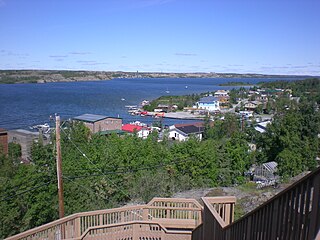
Yellowknife is the capital, largest community, and only city in the Northwest Territories, Canada. It is on the northern shore of Great Slave Lake, about 400 km (250 mi) south of the Arctic Circle, on the west side of Yellowknife Bay near the outlet of the Yellowknife River.
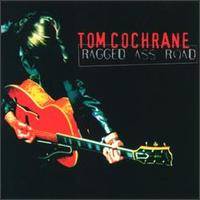
Ragged Ass Road is the third solo studio album by Red Rider frontman Tom Cochrane, released in October 1995. The album was named for Ragged Ass Road, a street in Yellowknife, Northwest Territories. Songs from the album include "I Wish You Well", which became the first Canadian song to debut at #1 on the RPM Canadian Singles Charts, as well as three other Top 20 hits in Canada: "Wildest Dreams", "Dreamer's Dream" and "Crawl". Ragged Ass Road earned two Juno award nominations and achieved Platinum sales status in Canada. The album was produced by Cochrane and John Webster at Metalworks Studios and Ragged Ass Road Studios.

Great Slave Lake, known traditionally as Tıdeè in Tłı̨chǫ Yatıì (Dogrib), Tinde’e in Wıìlıìdeh Yatii / Tetsǫ́t’ıné Yatıé, Tu Nedhé in Dëne Sųłıné Yatıé (Chipewyan), and Tucho in Dehcho Dene Zhatıé (Slavey), is the second-largest lake in the Northwest Territories of Canada, the deepest lake in North America at 614 m (2,014 ft), and the tenth-largest lake in the world by area. It is 469 km (291 mi) long and 20 to 203 km wide. It covers an area of 27,200 km2 (10,500 sq mi) in the southern part of the territory. Its given volume ranges from 1,070 km3 (260 cu mi) to 1,580 km3 (380 cu mi) and up to 2,088 km3 (501 cu mi) making it the 10th or 12th largest by volume.

Street sign theft occurs when street signs are stolen, to be used as decorations, sold as scrap metal or to avoid obeying the law by claiming later the sign was not there. Although the theft often seems arbitrary, signs with unusual or amusing names tend to be stolen more frequently. Sometimes considered to be a prank by the perpetrators, the theft is often costly and inconvenient for the municipality or agency that owns the sign. In the United States, each street sign generally costs between $100 and $500 to replace.

Kathleen Joan Reichs is an American crime writer, forensic anthropologist and academic. She is an adjunct professor of anthropology at the University of North Carolina at Charlotte.

New York State Route 199 is a 30.91-mile-long (49.74 km) state highway located in the Hudson Valley of the U.S. state of New York. Its western end is in Ulster County, where it begins as the continuation of the short U.S. Route 209 expressway east of its interchange with U.S. Route 9W; after crossing the Kingston–Rhinecliff Bridge over the Hudson River the rest of the highway crosses northern Dutchess County. As it does it passes through downtown Red Hook and Pine Plains, reaching its eastern end at U.S. Route 44 and State Route 22 southwest of Millerton in the upper Harlem Valley.

State Highway 82 is an 85.3-mile-long (137.3 km) state highway in the U.S. state of Colorado. Its western half provides the principal transportation artery of the Roaring Fork Valley on the Colorado Western Slope, beginning at Interstate 70 (I-70) and U.S. Highway 6 in Glenwood Springs southeast past Carbondale, Basalt and Aspen. From there it continues up the valley to cross the Continental Divide at Independence Pass. On the Eastern Slope, it follows Lake Creek past some of Colorado's highest mountains to Twin Lakes Reservoir, where it ends at US 24 south of Leadville.

Alberta Provincial Highway No. 1A is the designation of two alternate routes off the Alberta portion of Trans-Canada Highway 1. However, it is not the only name used for spurs off Highway 1 - Highway 1X is another such designation. Despite these highways being suffixed routes of Highway 1, they are not part of the Trans-Canada Highway network, and are signed with Alberta's provincial primary highway shields instead of the Trans-Canada shields used for Highway 1.

The Gold Range is a Canadian hotel and bar located in Yellowknife, Northwest Territories.
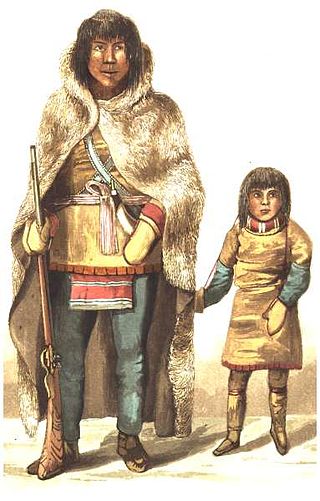
The Yellowknives, Yellow Knives, Copper Indians, Red Knives or T'atsaot'ine are indigenous peoples of Canada, one of the five main groups of the First Nations Dene who live in the Northwest Territories of Canada. The name, which is also the source for the later community of Yellowknife, derives from the colour of the tools made from copper deposits.
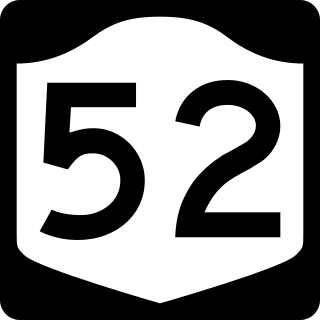
New York State Route 52 (NY 52) is a 108.72-mile-long (174.97 km) state highway in the southeastern part of the state. It generally runs from west to east through five counties, beginning at the Pennsylvania state line in the Delaware River near Narrowsburg, crossing the Hudson River on the Newburgh–Beacon Bridge, and ending in Carmel. NY 52 and NY 55, both major east–west routes of the Mid-Hudson Region, run parallel to each other, intersecting in downtown Liberty.
The Amazing Race Canada 1 is the first season of The Amazing Race Canada, a reality game show based on the American series The Amazing Race. It features nine teams of two with pre-existing relationships who raced around Canada and is hosted by Canadian Olympian Jon Montgomery. The grand prize includes a CA$250,000 cash payout, two Chevrolet Corvette Stingrays and unlimited air travel for a year with Air Canada. The show was produced by Insight Productions, in association with Bell Media and was broadcast on CTV.
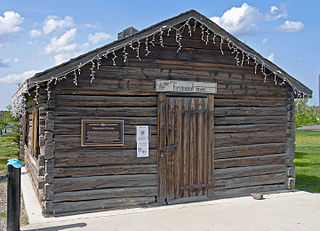
The Fireweed Studio is a log cabin in Yellowknife, Northwest Territories, Canada, located in Somba K'e Park near City Hall. It was built in the late 1930s to house explosives at what later became Giant Mine, and later moved to its present location. In 1996 it was listed on the Canadian Register of Historic Places; two years later it was designated a city Heritage Building for its status as a well-preserved remnant of the city's early years.

The Post Office building for Yellowknife, Northwest Territories, Canada, serving the X1A postal codes, is located at the southwest corner of 49th Street and Franklin (50th) Avenue. It is a two-storey concrete building in a late modernist style dating to the mid-20th century. In 2006 it was designated a City of Yellowknife Heritage Site in recognition of its long standing role as a social centrepiece for the downtown community; it has been administratively listed on the Canadian Register of Historic Places as a result. "This is where you went to find everybody" in the 1960s, one city councillor recalled when the building received its heritage plaque in 2010.

The first building used as a school in Yellowknife, Northwest Territories, Canada, is currently located on Franklin (50th) Avenue at the south end of New Town, the city's downtown section. It is a small log cabin dating to the mid-1930s. It was designated a City of Yellowknife Heritage Site in 1998, and listed on the Canadian Register of Historic Places in 2004.

The Greenstone Building, officially the Greenstone Government of Canada Building, and sometimes known as the Greenstone Government Building, is located on Franklin (50th) Avenue in downtown Yellowknife, Northwest Territories, Canada. It is a four-storey building faced in stone, completed and opened in 2005. Within are the local offices of 16 federal government agencies. Prior to the building's construction they were scattered in different buildings around the city.

Around midday on October 22, 2014, a passing motorist saw an Asian woman walking north along the Ingraham Trail on the outskirts of Yellowknife in the Northwest Territories, Canada. Several days later, after seeing stories in the local media that 45-year old Atsumi Yoshikubo (吉窪昌美) who had been visiting the city from her home in southern Japan, had gone missing, she reported the sighting. It was the last time she was seen alive.

Frame Lake is located in Yellowknife, Northwest Territories, Canada. It is an 84-hectare (210-acre) endorheic freshwater body located between the city's downtown section and a larger residential area. The Frame Lake Trail circles it, and city hall and the territorial legislative assembly building are on its shores.
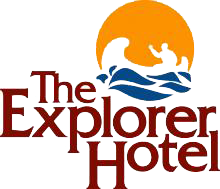
The Explorer Hotel is located on 49th Avenue in Yellowknife, Northwest Territories, Canada. It is an eight-storey-tall modernist concrete structure built in the mid-1970s. Located on a high outcrop of ground overlooking downtown, it is one of the tallest buildings in the city, and claims to be the largest hotel in Northern Canada; it has also been described as the city's best and grandest. It is owned and operated by Nunastar Properties.




















